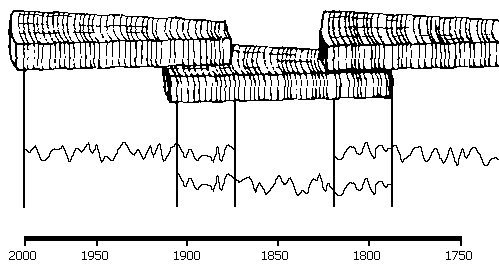Who isn't fascinated by Fibonacci numbers and the golden ratio of phi (1.6180339887) in the spiral of the chambered nautilus?
The nautilus' growth ratios of squares of 1, 1, 2, 3, 5, 8, 13, 21 and so on in the successive phi ratios are echoed in cabbage:
coneflowers:
and chamomile buds:
These famous spirals were on my mind while driving to my annual physical appointment yesterday. I listened to this Colorado Public Radio piece on a proposal to bring carbon ion radiotherapy to CO.
Carbon Ion Radiotherapy: Equipment the Size of a Large Building
I shared the salient parts of the research with my doctor. He completely pooh-poohed the idea. [So annoying.] I was intrigued as impressive survival results were reported in Germany and Japan in patients with tumour masses, especially for those with pancreatic cancer. (The carbon ion radiotherapy does not work in leukemias.)
This March 2014 article discusses the excellent results as well as the high costs ($120 million for the equipment or gantry) plus $40 million for the accompanying facility:
March 2014 carbon ion radiotherapy results
Radiation therapy is the medical use of ionizing radiation to treat cancer. In conventional radiation therapy, beams of X-rays (high energy photons) are produced by accelerated electrons and delivered to the patient to destroy tumour cells. Using crossing beams from many angles, radiation oncologists irradiate the tumour while trying to spare the surrounding normal tissues. Inevitably some radiation is deposited in healthy tissues.
When the irradiating beams are made of charged particles (protons and other ions, such as carbon), radiation therapy is called hadron-therapy. The strength of hadron-therapy lies in the unique physical and radiobiological properties of these particles; they can penetrate the tissues with little diffusion depositing the maximum energy just before stopping. This allows a precise definition of the specific region to be irradiated. The peaked shape of the hadron energy deposition is called the Bragg peak, the "symbol" of hadron-therapy. With the use of hadrons the tumour can be irradiated with less damage to healthy tissues.
Less damage to healthy tissues is particularly important in pediatric patients as those healthy cells are still developing.
It is of personal interest to me because my dad survived over four years with pancreatic cancer before his death a decade ago. He had a wonderful positive attitude, drank the special goo my mom made for him daily, and worked out with weights often. I imagine he would have been happy to give carbon ion radiotherapy a go.
Here's my dad (on the right) in a German beer garden in the early 50's:
He sure looks hoppy ;-)
Here's to you, Dad, and your open attitude to exploring new things! (Dad and me):
I am quite curious about your thoughts on carbon ion radiotherapy and pancreatic cancer; nautilus, flowers, and cabbage; and, of course, the great hops we grow here in Colorado.
Hoppily,
Steph
(Word Woman)
Another gardener and I did not marmalade, but plum jammed with stevia and sugar.
Roosters, chickens, ducks and eggs including green eggs (and no ham) and a double yolk egg in front:
The roosters' plumage was especially wild and fun. . .Sorry about the low light. We had to wait until dark for them to come home to roost from their free range day.
And, lastly, the Semiotics of Maizie:





































.jpg)






